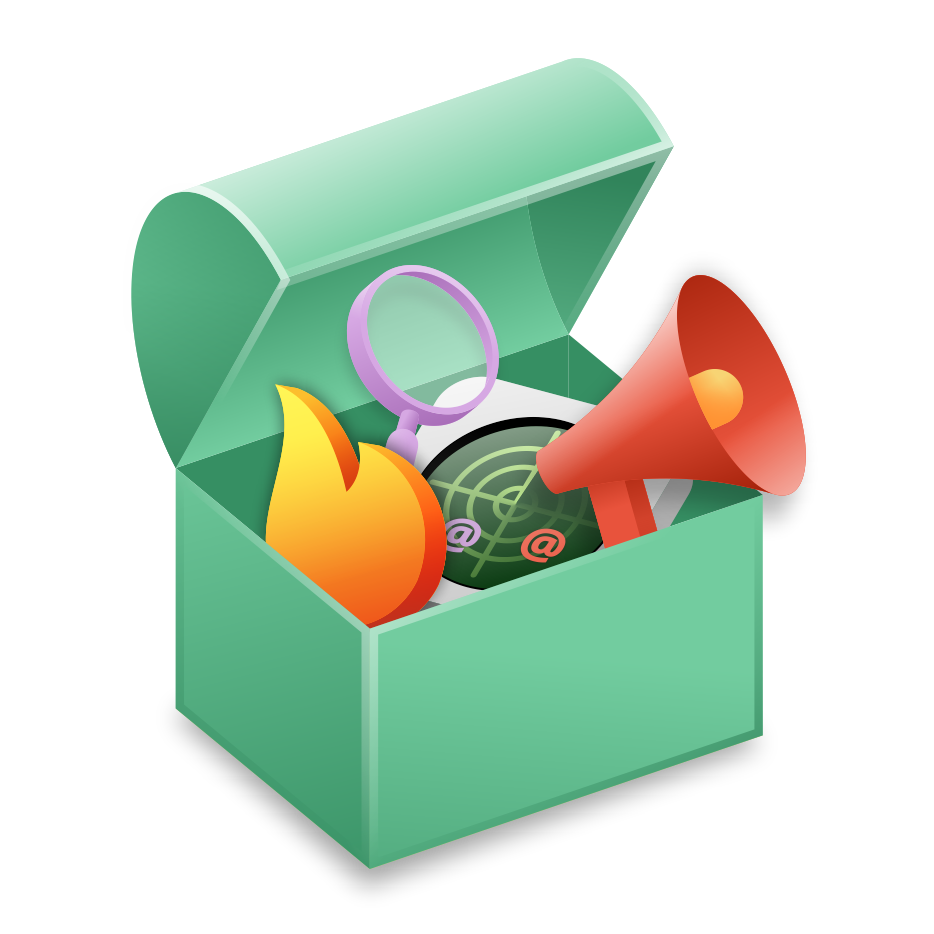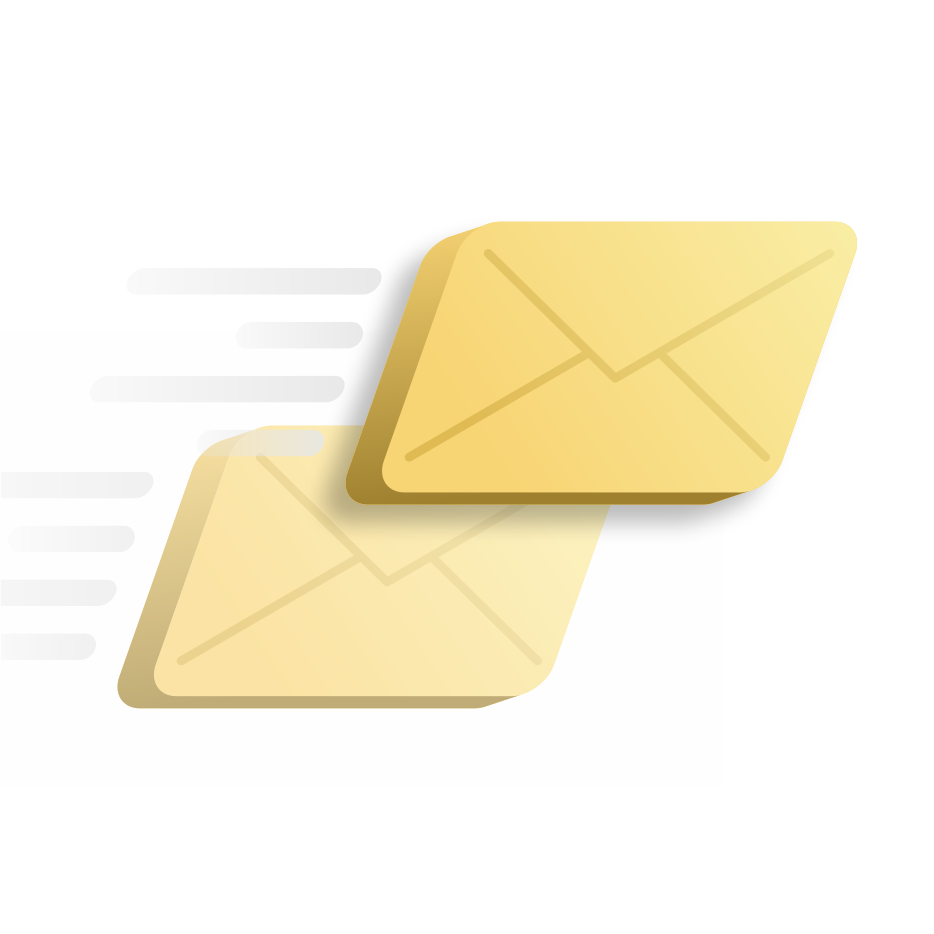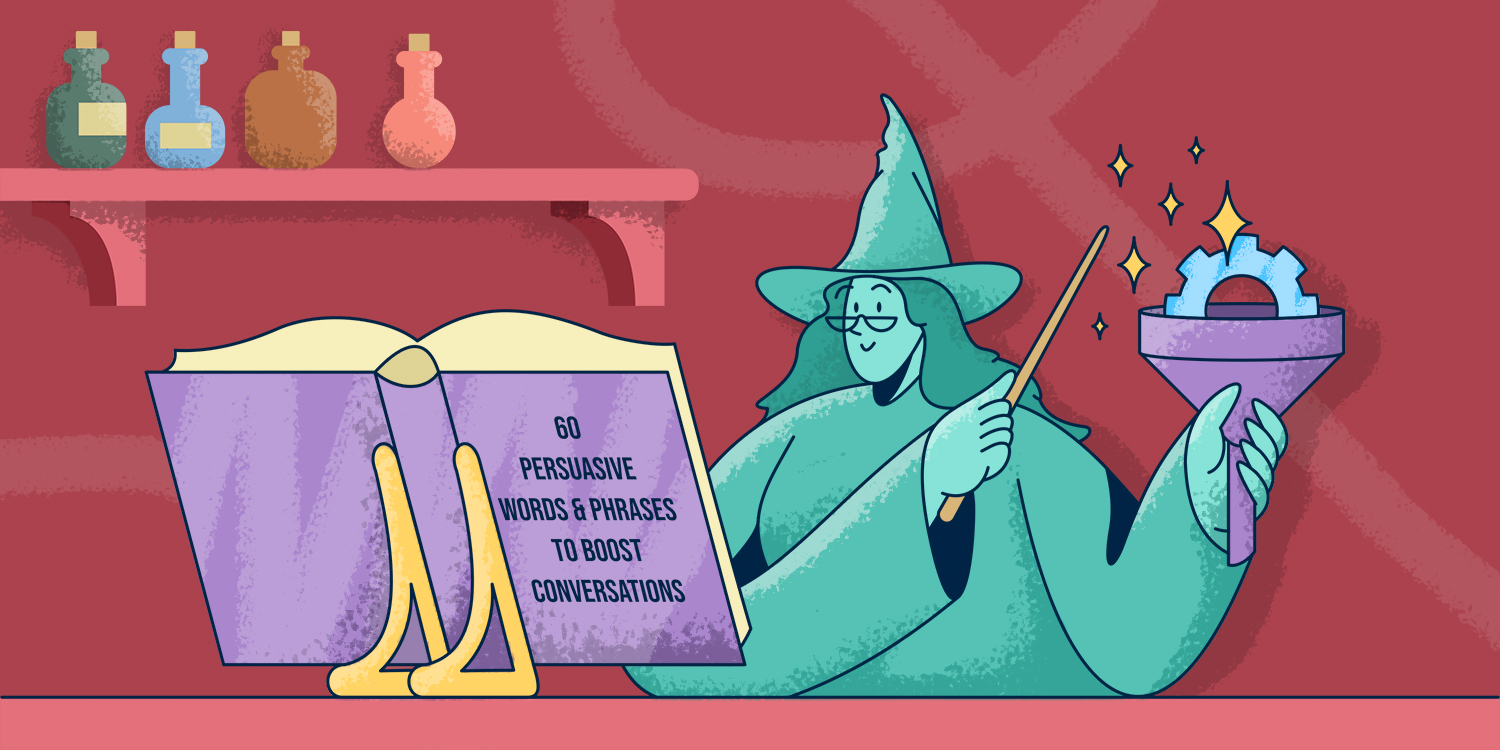In the dynamic business realm, where every pitch and presentation may become a real battleground, mastering the art of closing sales deals is akin to wielding a potent wand. The ability to cast a spell that captivates potential customers and gets you a contract is a skill that transforms a sales rep into a true sorcerer of success.
Will all your efforts pay off? Will you get a positive response from your qualified leads? While there are no guarantees, using the right sales closing techniques can help you achieve the desirable results.
In this post, we’ll share the secrets to closing a sale like a pro. Read it, save it to your bookmarks and watch those desired sales conversions roll in!
Outline:
What is sales closing?
To close a sale means getting the potential client to agree to the deal terms and firmly commit to making the purchase.
36% of sales reps claim that closing deals is the most challenging part of their job. This is because many prospects often say “no” first. So, sometimes salespeople give up before they can get that much-desired yes.
“Fundamentally, closing a deal should be the easiest part of a sales cycle. There are a series of key milestones you have to hit in order to be in a position to close a deal. If those key milestones are done well, closing is the easy part because the work’s already been done.”
Strategic account director for large enterprises at Salesforce
As you can see, proper sales closing techniques play a huge role in the success of a deal. Let’s break them down.
Six tips for successful deals
We’ve prepared a list of actionable recommendations to help you close the deal of your dreams effortlessly without wasting valuable time and resources.
How to close a sale:
1. Create an ideal customer profile
2. Know your value proposition and prospect’s pain points
3. Identify decision-makers
4. Encourage prospects with a conversation
5. Prepare an alluring sales pitch
6. Add a sense of urgency
1. Create an ideal customer profile
Sales closing kicks off way before a customer puts pen to paper to sign a contract. It starts with understanding who you’re actually selling to. To nail this, you’ve got to craft an ideal customer profile (ICP).
|
💡Pro-tip! Use the following data to create your ICP:
|
2. Know your value proposition and prospect’s pain points
Before you jump in, ensure you have a solid grasp of how your product features cater to the customer’s needs. Pursuing prospects who aren’t a good fit for your offer is a waste of time. Once you’ve identified their pain points, you can focus on how your product may help them. This approach increases the likelihood that these potential customers will be open for purchase.
3. Identify decision-makers
Now that you know the portrait of your customer and understand their pain points and your value proposition, you need to get closer to the decision-makers who hold all the cards. How? With lead qualification.
|
🎬Possible scenario: |
🤩A FREE tool to explore! Let Snov.io Email Finder handle the tedious work, freeing you up for more important tasks. Find any prospects’ contacts in a matter of minutes! If you’ve got a company URL, a prospect’s name, job title, location or industry in mind, Email Finder will deliver fast results. Individual and bulk searches are available.
Plus, every email you get is pre-verified with Snov.io’s built-in Email Verifier. No more chasing dead-end contacts – we’ve got you covered!
4. Encourage prospects with a conversation
Once you’ve prepared your prospect list, it’s time for the outreach. Sales teams may choose a variety of outreach forms: cold calling, cold emailing or social media messaging.
If you choose email outreach, you need to prepare an impressive email content. Keep it short, cater to your potential client’s needs, and add a clear call to action (CTA). Keep in mind that your CTA should motivate your prospect to either agree to a call or send you a reply. It’s not the time to sell your product yet.
|
Writing cold emails is a demanding task. But with Snov.io’s AI Email Builder, reaching out to your prospects becomes as easy as ABC. AI Email Builder crafts personalized emails, covering everything from sales pitches to follow-ups, upsells, cross-sells, and demo offers in various styles. This tool checks your grammar and can even translate your copy into 36 languages! |
5. Prepare an alluring sales pitch
Starting a chat with potential clients or getting them to reply to your email is just the beginning. Then, you need to show them how your product can be a win-win deal for their business.
Your sales pitch should highlight the product and the incredible benefits your prospects can get with it. It’s all about helping them see the tangible results and solutions your product brings to the table.
6. Add a sense of urgency
Creating a sense of urgency is crucial to keep your deals on track and avoid any hiccups. It gives your prospects a good reason to move ahead and make the deal.
One way to boost urgency is by providing a limited-time discount, complimentary onboarding, or anything that lets the prospect experience the value of your product.
|
💡Pro-tip! Need to push your deal forward? Level up your strategy with finesse by conquering common objections every pro sales rep has encountered in their career: 💰Price ⏳Timing 🤔Need 😑Competitors 👑Authority 🚩Risks |
→ Read our post on how to handle sales objections and avoid backfire effect
Now that you are equipped with efficient tactics and are ready to build trust with your customers, it’s time to review the best deal-closing methods.
What is a “sales closing technique”?
A sales closing technique is a strategy to convince potential leads to become paying customers. It’s all about turning their “maybe” into “yes.” You grab their interest, lay out the perks, and drop an offer they can’t resist. But, of course, it’s not a cakewalk. One lead’s delight might be another lead’s “meh.” That’s why sales teams should have various sales closing techniques up their sleeve to address any prospect’s pain points.
Effective sales closing techniques to use
Securing a sales deal may take a lot of time and effort, and what works for one client may not exactly work for another. So, we compiled a list of tried-and-tested methods that you can try out and choose the ones that fit you the most.
Sales closing techniques:
#6. The “1-10” closing technique
#7. 70/30 ‘Golden Rule’ sales close
#1. Now or never close
Here’s a cool sales technique that plays on the ‘fear of missing out’ (FOMO). Sprinkle in some special, limited-time offers to create a fun sense of urgency. The idea is to give your clients that little nudge so they happily say, ‘I’m in’!
For instance, you can mention that only a few items remain in stock, emphasizing the product’s limited edition. Employ trigger words such as ‘last chance,’ ‘ends soon,’ ‘today only,’ or ‘limited offer’ to prompt a sense of urgency.
|
👉Example ✍️ |
🤔How does it help to get more deals?
Let’s be real—nobody wants to pass up a great opportunity. That’s where the ‘now or never’ sales closing technique comes in. It works like a charm for those buyers who just need that little ‘push’ to make the final decision.
🕗When’s best to implement this sales strategy?
If the decision-maker is hesitating, employ this sales technique. Ensure you’ve highlighted the value before suggesting a discount. Act swiftly, as competitors are probably vying for the same qualified lead. For better results, deliver your ‘now or never’ message using smart email sequences.
Snov.io’s Email Drip Campaigns lets you schedule your emails exactly when you need to, ensuring you never miss an important follow-up. Thanks to conditions, you can quickly adapt to your recipients’ actions and send timely messages based on their actions. No more missed sales opportunities!
#2. Alternative sales close
Another effective sales closing method is giving clients some great choices. Let them explore and pick from a friendly selection of 2-3 options. It makes the decision-making process more enjoyable and engaging for everyone.
For example, try offering your prospects options like a 3-month, 6-month, or 1-year subscription. Instead of asking if they want to buy a subscription or not (boring, right?), give them a chance to pick the timeframe that suits them best!
|
👉Example ✍️ |
🤔How does it help to get more deals
This closing technique works wonders as people love having the freedom to have options, especially when it comes to spending money. Plus, tailoring your offer to your prospects’ unique needs adds value to your product.
🕗When’s best to implement this sales strategy?
If the clients hesitate to make a purchase, alternative sales close may encourage them. Alternatively, you can whip out this sales closing trick when their budget is a bit tight. Suggest starting with the basic version instead of going all-in with the advanced/pro features to help them ease into it.
|
💡Pro-tip! Keep this sales technique simple for the buyer—don’t overwhelm them with too many choices. People might think more options mean a better chance of finding the perfect sales deal, but it doesn’t always work this way. Maintaining balance is key. |
#3. Assumptive close
This closing technique taps into the power of positive thinking. It is rooted in the idea of a self-fulfilling prophecy, where believing in something increases the likelihood of it becoming a reality.
In this scenario, the sales rep confidently believes the sale has already been made and guides a prospect toward the next step to discuss the transaction details and invoicing.
|
👉Example✍️ |
🤔How it helps to close a sale
When using the assumptive close technique, you essentially offer the buyer two options—trust you or not. If your brand has a good reputation, the natural inclination for your prospect is to let you take the lead. This approach helps steer the potential client away from dwelling on reasons why they might hesitate to get your product.
🕗When’s best to use this closing technique?
If you believe your product or service perfectly fits a prospect’s needs, feel free to use this one. Otherwise, turn to other closing strategies available.
#4. Discount close
Offering discounts is a time-tested sales technique. Acts of generosity are always appreciated and give your buyers an extra incentive to say ‘yes.’
Discounts come in all shapes and sizes! Here’s a small list of discount types you can use for your business:
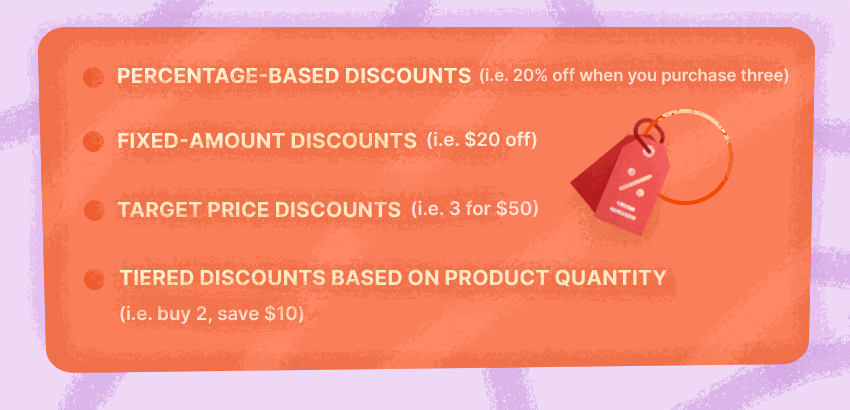
|
👉Example✍️ |
🤔 Why it’s a great option?
Who doesn’t like a good freebie? This sales closing tactic is a real crowd-pleaser because, let’s face it, everyone’s on the lookout for a sweet bargain on their favorite brands or services.
What statistics say about discounts and promotions
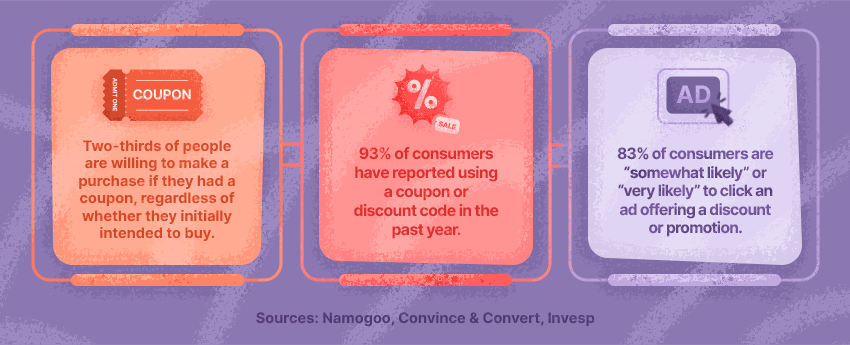
🕗When’s best to use this sales closing technique?
Passing up the discounted offer means missing out on savings and can signal a lower perceived value for your product or service; therefore, you need to evaluate potential negative effects before giving this sales closing technique a shot!
It works best when the perceived value of the product or service is high, and you are not sacrificing the profit margin. It is an ideal recipe for your customer loyalty programs, cart abandonment recovery, and special sales events like Black Friday.
#5. Sharp angle close
This approach means you use a customer’s question to close a deal. Instead of answering directly, you shift the gears and ask the counter-question.
|
🎬Possible scenario: |
Offer that extra discount but request an immediate payment for the subscription. It’s a savvy move that lets your prospects feel like they’ve got themselves a considerable price cut while you’ve effortlessly secured the sale.
|
👉Example✍️ |
🤔 Why it’s an effective way to close deals
Everyone benefits here. Your customers enjoy an extra yummy treat, and your sales team inches closer to hitting their quarterly (or monthly) revenue goals. It’s a win-win situation! Just ensure your offer brings you revenue and doesn’t hurt your budget.
Even if this method doesn’t work, it gives you an opportunity to discuss further details and ultimately reach a desired goal.
🕗When’s best to close the sale with this technique?
Sales experts often use this trick at the end of the quarter to hit their goals.
#6. The “1-10” closing technique
This one is designed to help potential clients weigh the pros and cons of your offer. It provides valuable feedback that you can use to your advantage to reach your goal.
|
👉Example✍️ |
Their feedback will guide your next steps:
- If the score is 8 or 9, go with: ‘Fantastic! Can you share more details, please?’
This will prompt your prospect to elaborate on the benefits of working with you. This way, you will be able to plan your next steps and successfully close the deal.
- If the score is under 5, try this: ‘I‘m sorry to hear that. Could you share some insights on how we can improve our [product/service]? Your input means a lot to us!’
🤔 Why it’s an effective way to close a sales deal
People love sharing their thoughts. They see you’re not just pushing sales but genuinely looking out for their interests.
🕗When’s best to try out this approach?
Feel free to implement this one when you need more details from your potential customers to make further decisions and understand where they stand.

How To Create Value For Your Customers: 9 Effective Tips
October 29 2025

10 Tips On How To Increase Sales For Your Small Business In 2026
December 23 2025
#7. 70/30 ‘Golden Rule’ close
The 70/30 ‘Golden Rule’ suggests that the customer should take the lead 70% of the time in the negotiation process, leaving the salesperson with a modest 30%.
What numbers say
Top-tier B2B sales pros speak 43% of the time, letting prospects lead 57% of the way. It’s all about balance for effective, customer-centric communication and successful deals.
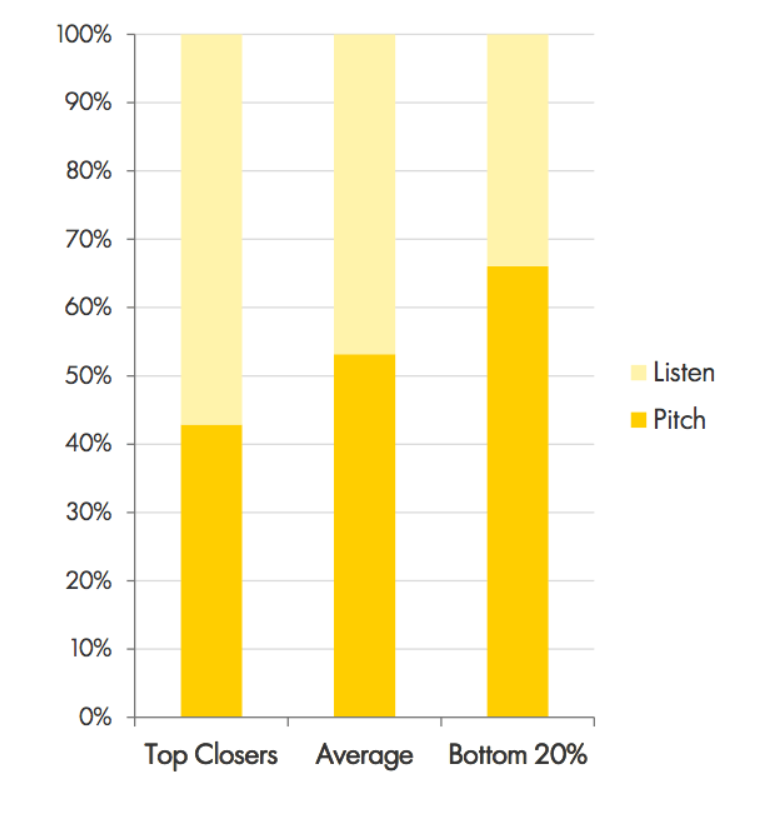
Active listening is the linchpin for successful sales. By attentively tuning in to your customer, you gain valuable insights into their concerns, desires, and challenges. Just remember, when you’re closing a deal, ask questions like, ‘Are you,’ ‘Can you,’ or ‘Will you’ instead of just making statements such as, ‘I’d like to’ or ‘Maybe, we can.’
|
👉Example✍️ |
🤔How can this technique improve your sales process?
It helps you identify specific product features that align with your prospect’s needs, fostering understanding and making them feel acknowledged. Remember, self-centeredness doesn’t seal successful deals!
🕗When’s best to include it in your sales process?
At any stage of the sales. Just be all ears from the get-go. It will make your clients happy and bring you more positive results in the long run.
#8. Soft close technique
Give the soft close a spin – it’s like asking closing questions without being pushy, so your prospect doesn’t feel they are backed into the corner.
|
👉Example✍️ |
🤔How can this approach improve your sales process?
This technique is incredibly smooth, allowing you to demonstrate the value of your product or service to the customer without any signs of pressure. It creates an impression of a casual dialogue rather than a pushy sales pitch.
🕗When’s best to include it in your sales process?
Use it after you’ve attentively listened to your prospect’s primary concerns. Prepare solutions that will bring your customers value and reach out to them.
→ Read more about effective sale proposals here
#9. Opportunity-cost close
If a prospective customer opts against purchasing your product, highlight what they would be missing out on. Include the associated benefits like potential ROI growth or reduced overhead costs.
|
👉Example✍️ |
🤔 Why it’s effective?
This technique turns your offer from a purchase to an investment. The goal here is to let the prospects see what they might lose if they decide against closing the deal.
🕗When’s the best time to use the opportunity cost technique?
When you feel your prospect is losing interest, especially when they’re about to say no, bring out the big guns by highlighting what your competitors are already benefiting from with your service.
#10. Objection close
Objections are inevitable when it comes to sales, so it is better to prepare in advance. For example, many prospects may question pricing or doubt that your solution benefits them.
|
👉Example✍️ |
🤔 Why it’s an effective way to close deals
You prove your expertise to your leads and ensure them that your services will be helpful to them.
🕗When’s best to use the objection close technique?
When your prospective customer seems confused or hesitant to sign the contract, it’s your moment to provide a clear explanation and address any misconceptions that may be causing confusion.
#11. Columbo close
Do you remember the iconic ‘just one more thing…’ phrase from the renowned detective Columbo in the well-loved series? This technique, named after him, offers prospects additional helpful information about your product, making them more inclined to make a purchase.
|
👉Example✍️ |
🤔 Why it’s an effective way to close deals
This technique works great when people don’t seem interested in your offering. Just hit them with a catchy one-liner to grab their attention without going over what they already know.
🕗When’s best to use this technique?
Once again, when you sense that your clients are not inclined to actually invest in your product.
#12. Ben Franklin close
Another technique with a familiar name! This one involves creating a list of pros and cons about a specific offer together with your prospect.

|
👉Example✍️ |
🤔 Why it’s an effective way to close deals
By letting buyers weigh the pros and cons and go through the list step by step, you have an opportunity to guide them toward the desired outcome.
🕗When’s best to use this technique?
When negotiations are unfavorable, deploy this technique to shift the tide. However, make sure that the pros outweigh the cons.

20 Sales Buzzwords To Avoid In Your Pitch
June 25 2025
Top sales closing mistakes you should avoid
Let’s crown this post with a list of top mistakes you should steer away from while closing a sale:
❌Aggressive approach alert: Pumping up the pressure might deflate your sale! Keep it cool to avoid discomfort and customer resistance.
❌ Knowledge gap: Knowledge is key. If you can’t ace the Q&A about your product, trust and credibility might take a tumble. Stay in the know to let your sales pitch glow!
❌ Lack of attention: Pay attention to your prospect’s objections, needs, and preferences. Ignoring them can spark skepticism and slam the brakes on your sales success.
❌Poor rapport: Soft skills matter! Building rapport is crucial, and without it, your deal most likely won’t bring any desirable results.
❌Counting chickens before they hatch: Presuming the sale is already closed without checking in on the customer’s interest or quelling any lingering doubts is a recipe for letdown.
❌Info alert: Drowning customers in tons of details and overwhelming them with extra data can push them away.
❌ Accelerating to nowhere: Sealing the deal is a journey, not a sprint. Speeding through the process might leave the customer uneasy, turning a golden opportunity into a missed moment.
❌Stepping into the fog: Failing to map out the next move for the customer can leave them wandering in uncertainty, triggering confusion and hesitation.
Wrapping up
Excited to test the waters? Remember, good sales usually come from trust, understanding, and effective communication—the pillars of the sales closing techniques we’ve just discussed. Be authentic, believe in your product, and genuinely help your prospect win.
Need a tool to help you close sales faster? Try Snov.io, a sales engagement and automation platform that blends all the benefits of a free sales CRM with advanced functionality for your successful sales outreach.

